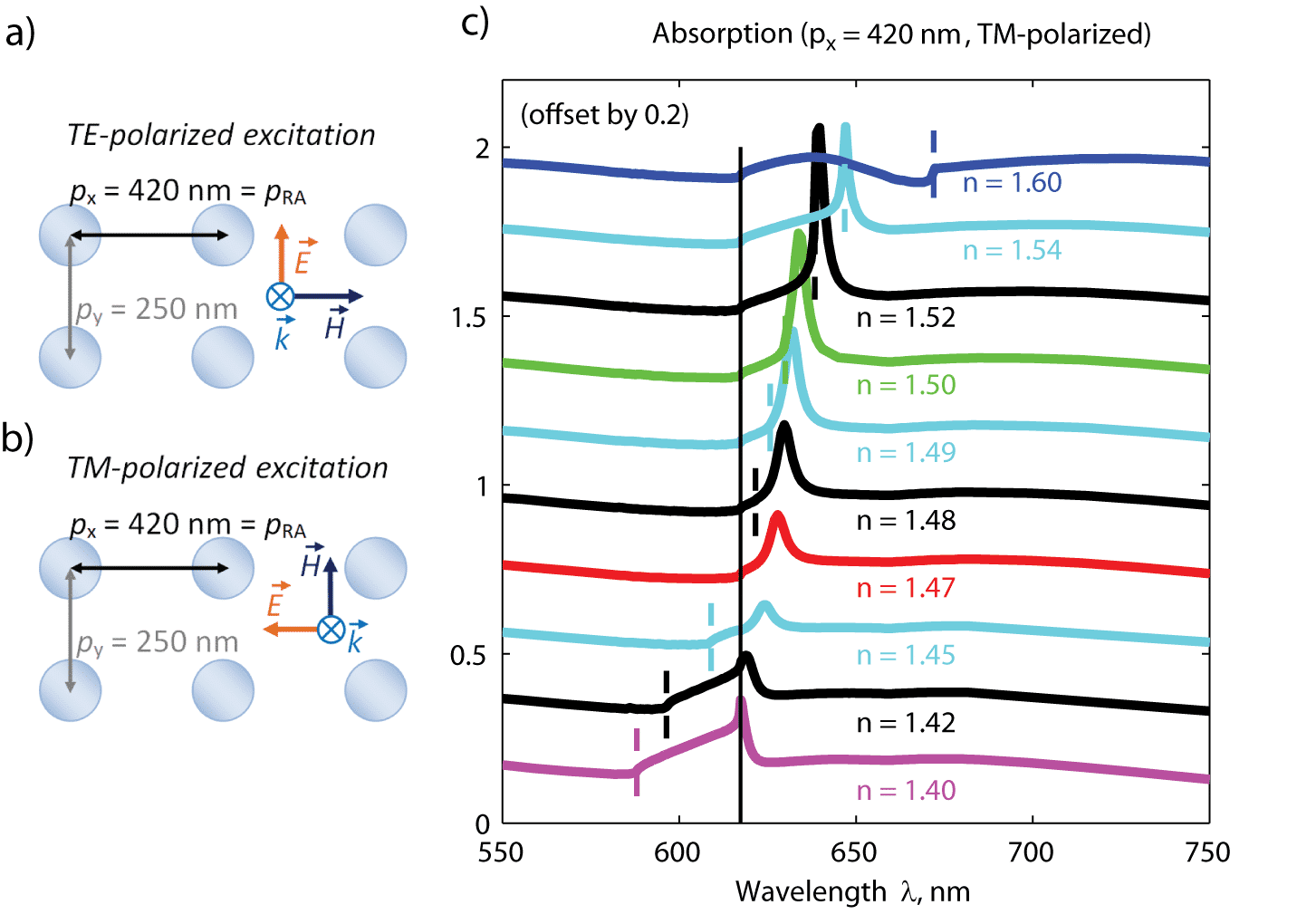
Collective Resonances of Plasmonic Nanoparticle Arrays Excited by Light with Polarization along Lattice Periodicity
It is well known that dipole coupling in one- and two-dimensional plasmonic nanoparticle arrays can produce narrow collective plasmon resonances in light transmission spectra (excitation of lattice waves). These resonances appear if the wavelength of scattered light is close to the wavelength corresponding to the Rayleigh anomaly (RA). The strength and width of the resonances are characterized by the spectral distance between the closest RA and the single-particle localized surface plasmon resonance (LSPR). The RA wavelengths are determined by the array periods, and the single-particle LSPR is determined by the particles size and shape. In the electric dipole approximation the lattice resonances involves only the dipole moments of the nanoparticles. These moments are oriented perpendicularly to the lattice wave propagation, and can only be excited by an incident wave polarized so that the electric field is perpendicular to the direction of lattice periodicity in which the inter-particle interaction occurs (sometimes referred to as TE polarization). Recently it was shown that plasmonic nanoparticle arrays placed on substrates can support lattice plasmon resonances for the other (TM) polarization. In this work, we theoretically study lattice resonances in plasmonic nanoparticle arrays under the normal incidence of light. We demonstrate the role of the quadrupole mode in the nanoparticles in the process of lattice wave excitation by light with TM polarization. Namely, we show that this quadrupole mode can result in excitation of lattice resonance caused by quadrupole coupling between nanoparticles in the array.
Figure: a) TE polarization, b) TM polarization, c) Absorption spectra for the rectangular array of gold nanodisks with unit cell dimensions 420 by 250 nm, height 50 nm, and diameter 170 nm. The incident light is TM-polarized and the incidence of light is normal. Index of the substrate is varied according to label (RA wavelength is marked by dotted line) and index of the superstrate is fixed to 1.47 (RA wavelength is marked by black solid line).
baviev@gmail.com

Powered by Eventact EMS